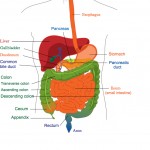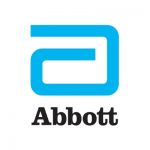According to the World Health Organization, cardiovascular diseases (CVDs) are the number one cause of death globally. While CVDs are the primary cause of death in developed countries such as the United States, more than three-quarters of CVD deaths occur in low- and middle-income countries. South Asia, in particular, experienced a 97% increase in CVD deaths from 1990 to 2013. In China, nearly 230 million people out of the country’s 1.3 billion currently suffer from CVDs.
The rise of CVDs in Asia can be attributed to increasingly sedentary lifestyles, high salt diets, poor air quality, and high smoking rates. Growing CVD rates throughout Asia have resulted in an increased demand for medical devices that improve heart function and blood flow.
Traditional Cardiovascular Medical Devices
Common CVDs in Asia include coronary artery disease, heart arrhythmia, congenital heart disease and rheumatic heart disease. These diseases can be treated using a variety of advanced medical devices such as pacemakers, left-ventricle assist devices and implantable cardioverter defibrillators.
Boston Scientific, Medtronic and St. Jude are just some of the major U.S. device manufacturers that provide cardiovascular devices to Asian markets. Some of these companies have already taken advantage of Asia’s growing demand by establishing research and development facilities throughout the region. In 2012, Medtronic opened an innovation center in Shanghai, which was opened in conjunction with China’s National Center for Cardiovascular Diseases. In 2014, Boston Scientific announced that it was working with Japan’s Asahi Intecc to develop a differentiated fractional flow reserve wire (a device used to treat calcified lesions in coronary arteries). In 2015, Japan-based Nipro Corp. announced that it was purchasing Infraredx, a U.S. company that specializes in building intravascular imaging devices.
GE Healthcare has been another prominent player in the Asian CVD market, establishing a strong base in China and, in 2008, supplying electrocardiogram (ECG) technology to the Chinese Olympic Committee. BSP, Ltd., an Israeli device manufacturer that builds heart monitoring equipment, has also had success marketing its products throughout Southeast Asia. It recently teamed with Schiller, a Swiss company, to sell a variety of ECG products to hospitals and healthcare providers in Asia. These companies’ products are all used in the diagnosis and monitoring of various heart conditions.
Minimally Invasive Products and New Technology
In recent years, Western companies have also pioneered a number of minimally invasive devices such as the transcatheter aortic valve replacement (TAVR). This device allows surgeons to replace a diseased aortic heart valve without open heart surgery. As a result, hospital stays can be shortened from several weeks to three to five days. Edwards Lifesciences and Heart Leaflet Technologies (HLT Medical) are two of the U.S.-based companies developing this type of minimally invasive technology.
Although most of the minimally invasive cardiovascular products being developed in the United States are destined for U.S. and EU markets, CardioKinetix, a California-based company developing a transcatheter implant to treat heart failure patients, successfully carried out clinical trials in Beijing in 2015. CardioKinetix reports that more than 30 patients have already been tested with its Parachute Ventricular Partitioning Device.
Terumo, a Japanese company, produces a variety of CVD devices, including cardiopulmonary bypass systems, intravascular imaging system, and vascular grafts. In addition, Terumo has a subsidiary company called Vascutek that focuses exclusively on the development of CVD devices. Vascutek is developing a multi-branched graft and distal stent and an abdominal aortic aneurysm (AAA) stent graft system called Anaconda. The Anaconda system’s flexible design allows it to be repositioned inside of a patient’s body, which makes it ideal for challenging anatomical positions.
The Singaporean government has also developed the country into a regional hub for CVD device research and development. Greatbatch Medical has established an R&D center in Singapore. In addition, Medtronic opened a manufacturing facility in Singapore in 2012. Medtronic forecasts that about 50% of its pacemakers will be produced in its Singapore facility by 2017.
Chinese Companies Gain Market Share
While companies in the United States, Japan and Singapore have developed the most widely used AAA cardiovascular devices in the market, Chinese companies are quickly closing the technology gap with more affordable products. Five years ago, the Chinese drug-eluting stent market was composed of 75% foreign products and 25% locally made products. Today, these percentages have reversed, with Chinese-made products accounting for 75% of the total market. Chinese cardiovascular devices that cost 25–40% less and are about 80% as effective as Western competitors have products that can easily be sold to developing countries that cannot afford the AAA-quality products of the West. In response to this competition, some Western cardiovascular companies are coming out with new “valve-oriented” devices.
Microport and Lepu Medical, $2 billion-dollar Chinese medtech companies, are leading developers of CVD devices and equipment that have been looking to expand their operations into international markets. In 2015, MicroPort obtained CE certification for its OptimAblate Cardiac RF Generator, which restores normal heart function to patients suffering from CVDs. In February 2016, MicroPort received market approval in Indonesia to launch its Foxtrot balloon catheter. In January 2016, Lepu announced that it was investigating opportunities to sell its pacemakers to the Indian market.
The demand for cardiovascular devices is rising as Asia grows wealthier and people live longer. While traditional CVD treatments involving stents and balloons will continue to play an important role in addressing the incidence of CVDs, the development of new diagnostic devices and more advanced non-invasive treatments will invariably change the market and provide new opportunities for device manufacturers.







